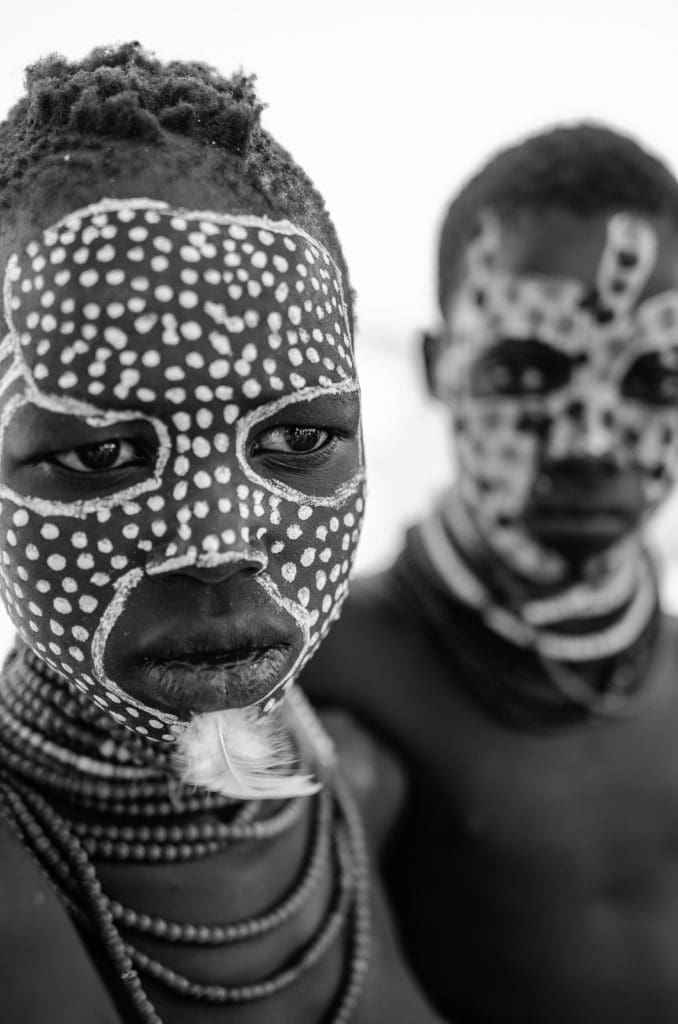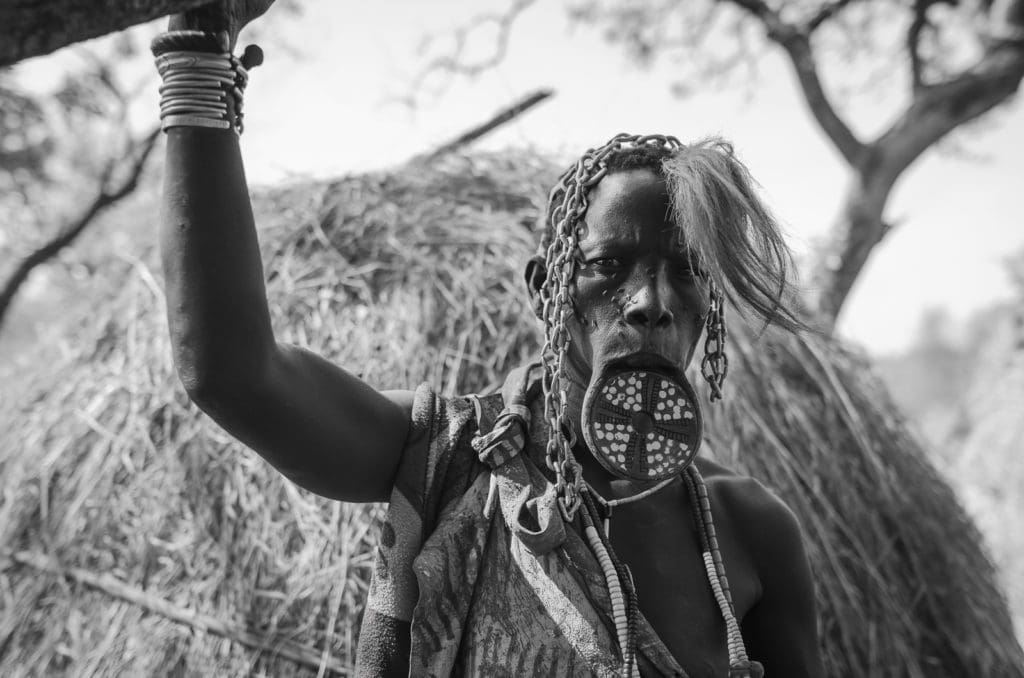People of Kau by Leni Riefenstahl is a beautiful photo book about the Nuba of Sudan that someone had given to my father, perhaps in the early 1980s. Even today, reviewing those pictures, I remember them all perfectly. As a child I flipped through that book a thousand times, attracted but also frightened (the photos of the fighting between the tribes are particularly bloody) by this distant and mysterious world.
A few years later I discovered that the author of those images, which had fascinated me so much as a child, had contributed with her films and documentaries to Nazi propaganda. She made ‘Triumph of the Will‘, a film in which the figure of Hitler and the superiority of the Aryan race were celebrated.
Although this discovery left me in a great dilemma regarding the ethical value of photography, it did not scrape my conviction that I would visit this reality unknown to me, sooner or later. After many years, in 2018, I went not to Sudan but to Omo Valley, a tribal territory in southern Ethiopia. Thus, a dream I had nurtured for so long came true. I could finally live my authentic experience among the tribes.
However, things turned out a little differently than I had imagined.

Omo Valley: a land of diversity
The Omo Valley is inhabited by some 200,000 indigenous people belonging to tribal clans that differ widely in their customs, traditions and languages. The cultural heritage of these peoples has remained intact to this day, despite the severe environmental and human impact of the gigantic hydroelectric dam project in the Omo River, aimed at large-scale crop irrigation. Multinationals are waiting to cultivate thousands of hectares of land, while subsistence farming is gradually being replaced by industrial agriculture.
Despite the uncertain future, life within the villages still flows in a primitive form, and bartering prevails over the monetary transactions of the modern world. Among these populations, body modifications are synonymous with beauty and tribal identity. The large lip plates of the Mursi women, the Karo youths painted with white ash, and the Hamer’s hair and bodies painted ochre represent just some of the striking differences among the tribes in this area. Indeed, it is thought that this area is one of the most genetically and linguistically diverse places in the world and offers a glimpse into the history of human evolution.



Money for photos
However, this cradle of humanity is not exactly a lost paradise. The Omo Valley has recently fallen victim to mass commercial, hit-and-run tourism. The tribes in this area are considered incredibly photogenic, which has led to an increase in so-called ‘photographic’ tourism. During my visits to the villages of Mursi, Dassanech, Karo, Konso, and Hamer, I rarely didn’t encounter people intent on taking photographs, sometimes even aggressively.
Even in those villages where I found no tourists, it was clear that any social interaction was impossible. Not so much because of the language barrier but mainly because the relationship with visitors gradually turned into a source of income, however minimal. Money for photos.
The predatory act of photographing
I must admit that I did not always feel comfortable, and I questioned my presence there throughout the trip. I tried to approach it as respectfully as possible, trying not to turn my visit into a ‘human safari’. I was just a silent traveller, and I knew when photographing was not correct.
Despite this, the ethical dilemma of photography that I wrote about at the beginning came up again, but in another form. I was reminded of Susan Sontag ‘s words, “There is something predatory about the act of taking a picture.”
The aggression implicit in the use of the camera, which Sontag tells us about, is something to ponder.

NOTES
- PEOPLE OF KAU, Leni Riefenstahl (1976)
Photographic monograph on the life of the Kau people in the southern part of Sudan. In 1975, Riefenstahl spent 16 weeks with the Nuba people of Kau. This people, known as the “Nuba of the Southeast,” live only 100 miles away from the Nuba of Mesakin. However, they speak a different language, follow different customs and are said to be very different in character and temperament. Their knife fights, love dances and elaborately painted faces and bodies are depicted in the book.(Source) - THE TRIUMPH OF THE WILL is a 1935 National Socialist propaganda film directed by Leni Riefenstahl. The film documents the Nuremberg Rally of the National Socialist German Workers’ Party held from September 4 to 10, 1934. The film contains excerpts from the various speeches given at the rally by the various political leaders of the Nazi Party, mainly excerpts from Adolf Hitler, interspersed with footage of party members. Hitler himself commissioned the film and his name appears in the opening credits.(Source)
- ON PHOTOGRAPHY (On Photography, 1973), Susan Sontag
Translation by Ettore Capriolo, Collana Nuovo Politecnico No. 107, Einaudi, Turin, I ed. 1978.

